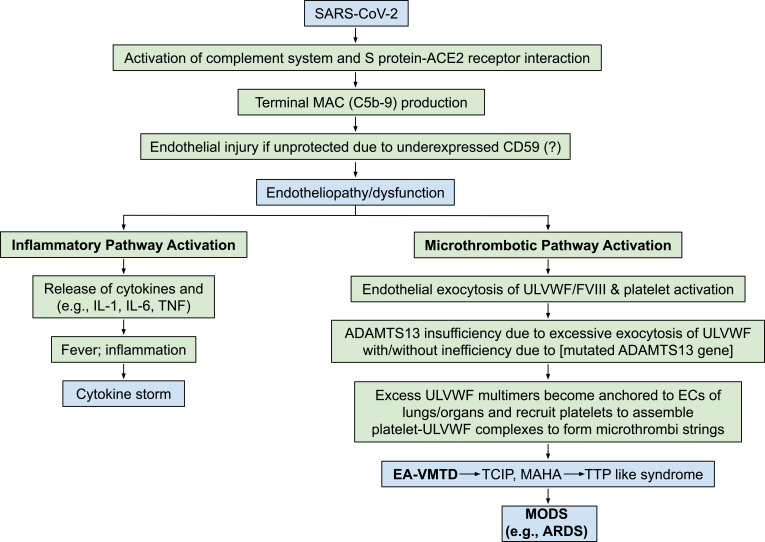Figure 3.
Proposed endothelial pathogenesis of SARS-CoV-2 viral sepsis based on “two-activation theory of the endothelium.”
Notes: Endothelial molecular pathogenesis of ARDS as one organ phenotype among MODS is illustrated. The underlying pathologic nature of ARDS is ahemostatic disease caused by endotheliopathy due to complement activation and viral Sprotein-endothelial receptor ACE2 interaction that promotes the activation of two molecular pathways. One is inflammatory pathway, which releases cytokines and provokes inflammation, including inflammatory fever, malaise and myalgia. The other is microthrombotic pathway, which promotes exocytosis of ULVWF and platelet activation and triggers much more deadly DIT via microthrombogenesis, leading to EA-VMTD. It orchestrates consumptive thrombocytopenia, MAHA, TTP-like syndrome and MODS. Abbreviations: ACE2, angiotensin converting enzyme 2; ARDS, acute respiratory distress syndrome; DIT, disseminated intravascular thrombosis; ECs, endothelial cells; IL, interleukin; MODS, multiorgan dysfunction syndrome; SARS, severe acute respiratory syndrome; TCIP, thrombocytopenia in critically ill patients; TNF, tumor necrosis factor; TTP, thrombotic thrombocytopenic purpura; EA-VMTD, endotheliopathy-associated vascular microthrombotic disease; ULVWF, unusually large von Willebrand factor.

